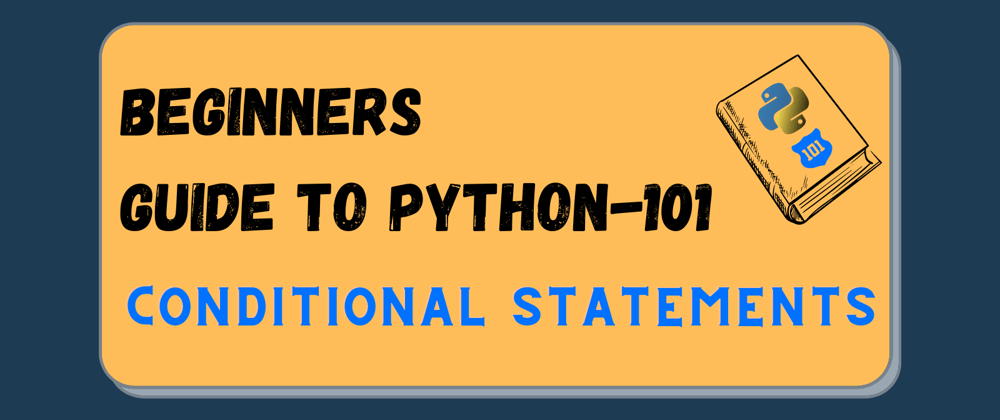Just like any other programming language python also supports use of conditional statements also known as decision making statements. They are used to determine if given condition is true or false.
But first before we take a look at some of the most common ones, let's begin by going through some of the basic comparison operators and how they are used:
- Equals (==)
- Not Equal (!=)
- Less than (<)
- Less than or equal to (<=)
- Greater than (>)
- Greater than or equal to (>=)
All of these comparison operators can be leveraged in the conditional statements mostly in if statements and loops.
Types of Condition Statements
1. If Statement
It is the most commonly used, It's main purpose is to check if a statement is true or false.
Syntax
if expression:
statement
example
x=10
y=15
if y>x:
print("Y is greater")
2. If else Statement
It is a conditional statement that compares between two conditions. The else keyword helps you add some additional statements to your condition clause.
Syntax
if (condition):
#statement
else:
#statement
example
x=10
y=15
if y==x:
print("Values are equal")
else:
print("Values are not equal")
3. Elif Statement
Used to compare one or more statements, it is a shortcut of the else if condition.
Syntax
if(condition):
statement
elif(condition):
statement
else:
else statement
example
x = 15
y = 15
if a < b:
print("a is greater")
elif a == b:
print("a and b are equal")
else:
print("b is greater")
4. If-Not Statement
It let's you check for the opposite condition to verify whether thee value is Not True. The statements passed will execute if the value passed is False.
Syntax
if Not value:
statement
example
list1 = [2,4,6,8]
y = 10
if y not in list1:
print("Y is missing in the list")
5. Nested Statements
This is when an if statement is used inside another if statement.
Syntax
if condition1:
if condition2:
statement
example
x = 15
if x >= 0:
print("Zero")
if x == 0:
print("Zero")
In this article we have gone through some of the common conditional statements we have in python, in the article I share more on loops and how they are used in python.
See you in the next one!








Oldest comments (0)